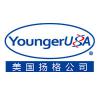??轉自“中關村NMT聯盟”

期刊:BMC Plant Biology
主題:油菜素內酯促黃瓜根系銨硝吸收機制
標題:24-Epibrassinolide promotes NO3- andNH4+ ion flux
rate and NRT1 gene expression in cucumber under suboptimal root zone
temperature
影響因子:3.930
檢測指標:NO3-、NH4+流速
檢測部位:根毛區
作者:中國農業科學院蔬菜與花卉研究所Ali Anwar、李衍素、于賢昌
點擊觀看視頻
英文摘要
Suboptimal root zone temperature (RZT) causes a
remarkable reduction in growth of horticultural crops during winter
cultivation under greenhouse production. However, limited information is
available on the effects of suboptimal RZT on nitrogen (N) metabolism
in cucumber seedlings. The aim of this study is to investigate the
effects of 24-Epibrassinolide (EBR) on nitrate and ammonium flux rate, N
metabolism, and transcript. levels of NRT1 family genes under suboptimal
RZT in cucumber seedlings.
Suboptimal RZT (LT) negatively affected on
cucumber growth and proportionately decreased EBR contents, bleeding
rate, root activity, enzyme activities of nitrate reductase (NR),
nitrite reductase (NiR), glutamine synthetase (GS), and glutamate
synthase (GOGAT), nitrate (NO3?) influx rate, ammonium (NH4+) efflux
rate, and transcript. levels of nitrate transporter (NRT1) encoding
genes. However, exogenous EBR reduced the harmful effects of suboptimal
RZT and increased endogenous EBR contents, bleeding rate, root activity,
enzyme activities of NR, NiR, GS, and GOGAT, NH4+ and NO3? flux rates
and contents, and N accumulation. EBR-treated seedlings also upregulated
the transcript. levels of nitrate transporters CsNRT1.1, CsNRT1.2A,
CsNRT1.2B, CsNRT1.2C, CsNRT1.3, CsNRT1.4A, CsNRT1.5B, CsNRT1.5C,
CsNRT1.9, and CsNRT1.10, and downregulated CsNRT1.5A and CsNRT1.8. LT
treatment upregulated the expression level of CsNRT1.5A, while exogenous
BZR application downregulated the expression level of NRT1 genes.
These
results indicate that exogenous application of EBR alleviated the
harmful effects of suboptimal RZT through changes in N metabolism, NH4+
and NO3? flux rates, and NRT1 gene expression, leading to improved
cucumber seedlings growth. Our study provides the first evidence of the
role of EBR in the response to suboptimal RZT in cucumber, and can be
used to improve vegetable production.
中文摘要(谷歌機翻)
次優根區溫度(RZT)導致在溫室生產期間冬季栽培期間園藝作物的生長顯著減少。然而,關于次優RZT對黃瓜幼苗中氮(N)代謝的影響的信息有限。本研究的目的是研究24-表油菜素內酯(EBR)對黃瓜幼苗次優RZT下NRT1家族基因的硝酸鹽和銨通量,N代謝和轉錄水平的影響。
次優RZT(LT)對黃瓜生長有負面影響,并且比例降低EBR含量,出血率,根系活力,硝酸還原酶(NR),亞硝酸還原酶(NiR),谷氨酰胺合成酶(GS)和谷氨酸合成酶(GOGAT)的酶活性,硝酸鹽(NO3-)流入速率,銨(NH4
+)流出速率和硝酸鹽轉運蛋白(NRT1)編碼基因的轉錄水平。然而,外源EBR降低了次優RZT的有害作用,增加了內源EBR含量,出血率,根系活力,NR,NiR,GS和GOGAT的酶活性,NH4
+和NO3-通量率和含量以及N積累。
EBR處理的幼苗也上調了硝酸鹽轉運蛋白CsNRT1.1,CsNRT1.2A,CsNRT1.2B,CsNRT1.2C,CsNRT1.3,CsNRT1.4A,CsNRT1.5B,CsNRT1.5C,CsNRT1.9和CsNRT1的轉錄水平。
.10,并下調CsNRT1.5A和CsNRT1.8。 LT處理上調CsNRT1.5A的表達水平,而外源BZR應用下調NRT1基因的表達水平。
這些結果表明,外源施用EBR通過改變N代謝,NH4 +和NO3-通量率以及NRT1基因表達減輕了次優RZT的有害作用,從而改善了黃瓜幼苗的生長。我們的研究首次證明了EBR在黃瓜中對次優RZT的反應中的作用,并可用于改善蔬菜生產。

Fig. 4 Effects of suboptimal RZT and EBR on NO3- (A;
scatter NO3- flux rate, B; average NO3- flux rate) flux rate in roots of
cucumber seedlings under suboptimal RZT treatment. Flux rate was
recorded for 10?min in roots seven days after treatment. Each point is
the mean of nine individual seedlings and bars indicate standard
deviations. Treatments with the same letters are not significantly
different by the least significant difference (LSD) test at P?=?0.05
文章鏈接:
https://bmcplantbiol.biomedcentral.com/articles/10.1186/s12870-019-1838-3
中關村NMT聯盟統籌安排全國NMT測試服務,如需開展NMT相關實驗,請聯系聯盟:010-8262 4800轉12
旭月版權所有,轉載注明出處.






